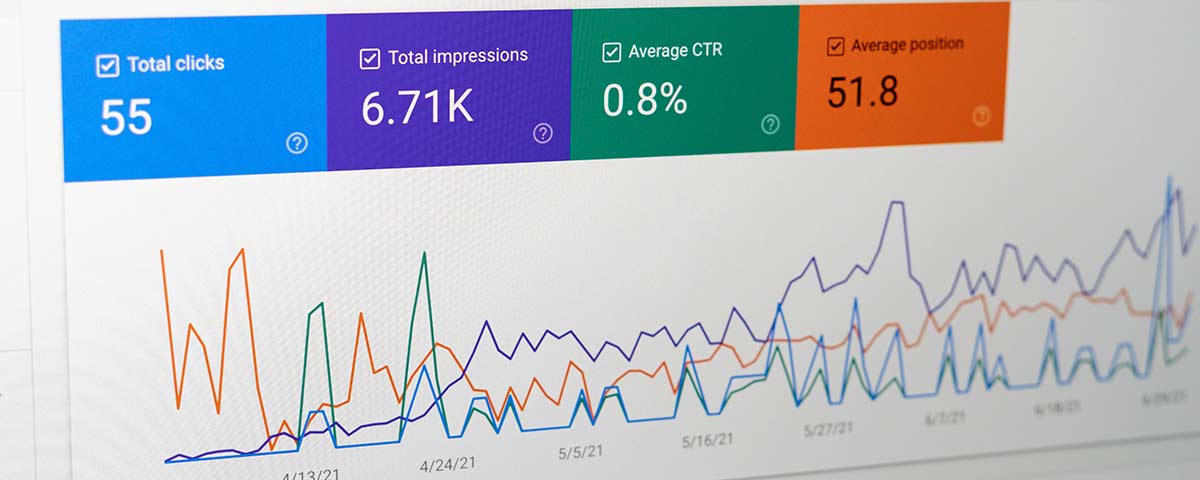Google Analytics 4 (GA4) is set to replace Universal Analytics, officially taking over on July 1, 2023. This means Universal Analytics will stop processing new hits and collecting data. This also means that migrating your site to GA4 now is urgently necessary.
SEO and marketing strategies, individually and collectively, will be at risk if you don’t acknowledge the importance of keeping up with the latest analytics platform. It’s the most effective way to track and analyze your site traffic and user behavior.
Understanding the Google Analytics Transition
Google Analytics is a popular web analytics service provided by Google. There have been several updates and changes over the years, the latest version being Google Analytics 4 (GA4).
One of the key differences between Universal Analytics and GA4 is the way data is collected and analyzed. With Universal Analytics, data is collected using tracking codes placed on a website and analyzed using manual processes, such as reports and dashboards. In contrast, GA4 uses machine learning algorithms to automate the data analysis process, providing website owners with more accurate and up-to-date insights.
Among the many benefits of migrating from UA to GA4, driving conversions is in the top five. Other benefits include creating custom audiences for your ad campaigns, as well as enhanced privacy and tracking features. Develop a transition timeline and recommended migration approach for your business to follow for a smooth migration.
Preparing for the Migration
By October 2023, Universal Analytics will be completely decommissioned. GA4 will be the only way to process new data pertinent to your business and industry. Consequently, auditing your existing UA implementation is the only way to prepare for the migration from what was to what will be.
Whether UA or GA4, identifying key metrics and goals to track is essential to gaining and retaining a competitive advantage. Maximize your competitive advantage by identifying key metrics and goals to track in GA4, as it will be the only service available to process new data.
Setting up a new GA4 property—a set of reports and data associated with your site and/or app—allows you to track site traffic while building a quality report system.
Migrating Data from UA to GA4
According to Google, the earlier you migrate to GA4, the more historical data and insights you will have. Expect a few challenges when exporting and importing historical data from UA to GA4.
The migration from UA to GA4 should be done as quickly as possible. Make sure you are handling cross-domain and cross-device tracking with the proper configuration to ensure you have accurate and reliable data. Be prepared, as Google may delete existing UA properties, historical data, and reports after the migration period ends.
Also, it’s important to spend time mapping UA features and settings to GA4 while transitioning is still an option.
Setting Up Tracking in GA4
Not only is it easier to install analytics with GA4, tracking website events and conversions is also easier to set up.
GA4 collects data to help you understand the customer and make informed decisions based on that data. It also provides a more flexible and accurate way to track user interactions and behaviors.
Google has improved analytic tracking by implementing enhanced measurement features in GA4. GA4 not only provides greater comprehension and insights into digital marketing but also access to data streams that may benefit your marketing efforts. Utilizing these data streams, whether it be for your site, mobile apps, or other platforms, is key for improving user experience and driving conversions.
Customizing and Analyzing Data in GA4
Creating custom dimensions and metrics in GA4 is even more powerful than in UA. The descriptive attributes used to segment and analyze data can be customized to your customers’ behaviors, needs, and preferences, and to events important to your business. These custom dimensions and metrics then appear in your reports and explorations and in the audience and segment builders.
In addition to increased data integrations, GA4 provides a more intuitive and user-friendly interface for building custom reports and dashboards. GA4 simply takes tracking website traffic and user behavior to the next level with improved data collection methods.
Utilizing the machine learning capabilities in GA4 is another way to analyze collected data. GA4 allows you to accurately evaluate and interpret data, as well as track certain events and user behaviors that are unique to your website.
GA4 Best Practices and Tips
In web analytics, tagging campaigns and tracking traffic sources are important if you want to effectively send users to your site. Both allow you to collect data that is processed and populated in a customized report. Tagging campaign and traffic-source dimensions and metrics then become available through the web interface and Reporting API. UA did not have capabilities of this magnitude.
Make good use of GA4’s enhanced privacy controls, as Google has implemented data privacy and consent settings in GA4 that were non-existent in UA.
Overall, GA4 introduces many new features that are more useful and advanced than UA. There are several benefits to leveraging advanced analysis features in using GA4, the future of analytics. Stay up to date with the latest developments in this constantly evolving industry.
Monitoring and Optimizing GA4 Performance
Each GA4 property can have up to 50 data streams. In GA4, the term “streams” is used to refer to a set of events that are grouped together based on a common theme or goal. This term does not exist in Universal Analytics.
By understanding these differences, you can better navigate the new GA4 interface and take advantage of the new features and capabilities. You can also ensure you are using the appropriate metrics and analyzing the right data to make informed decisions.
Staying updated with new features and updates in GA4, as well as understanding the differences between GA4 and Universal Analytics, is crucial for website owners who use Google Analytics as a tool for tracking their website traffic and user behavior. Of course, the ultimate goal is to get the most out of your Google Analytics data, improve your website, and achieve your business goals.
Not only is GA4 a stronger tool to use for digital marketing, but it also gives you greater data control. Look at it as GA4’s effort to make it easier for you to understand and use to optimize your business operations. Most importantly, it’s a reflection of the evolution of web analytics and the continued importance of accurate and comprehensive data analysis.
Fear Not, YDM Clients
If you have a website that was developed by Yellow Duck Marketing, we’ve handled the transition. Google has been communicating the change from Universal Analytics to GA4 for some time – rest assured that your website data is still being collected! Contact us to schedule a deep dive into your GA4 dashboard, conversion strategy call or if you want to learn more about how GA4 can help you reach your online business goals.
References:
- Google Analytics 4 Beta Overview: https://analytics.google.com/analytics/web/provision/?authuser=0#/provision
- Universal Analytics Overview: https://support.google.com/analytics/answer/2844870?hl=en
- Google Analytics official documentation: https://support.google.com/analytics
- Google Analytics blog: https://analytics.googleblog.com/
- Brightlark Digital blog: https://blog.brightlark.com/5-benefits-of-google-analytics-4-you-cant-ignore
- GA4 product overview: https://analytics.google.com/analytics/web/progressive/
- Universal Analytics product documentation: https://developers.google.com/analytics/devguides/collection/analyticsjs/
- [UA→GA4] Comparing metrics: Google Analytics 4 vs. Universal Analytics: https://support.google.com/analytics/answer/11986666?hl=en#zippy=%2Cin-this-article
- GA4 Migration Checklist: https://e-cens.com/wp-content/uploads/2022/09/GA4-Migration-Checklist-e-book.pdf
- Google Analytics Academy: https://analytics.google.com/analytics/academy/
- Google I/O presentations on GA4 and Universal Analytics: https://www.youtube.com/user/GoogleDevelopers
- GA4 Migration Checklist – Auditing and Planning: https://e-cens.com/ga4-migration-checklist_auditing-and-planning/
- Cross-domain tracking in Google Analytics 4- Analytics Mania: https://www.analyticsmania.com/post/cross-domain-tracking-in-google-analytics-4/








